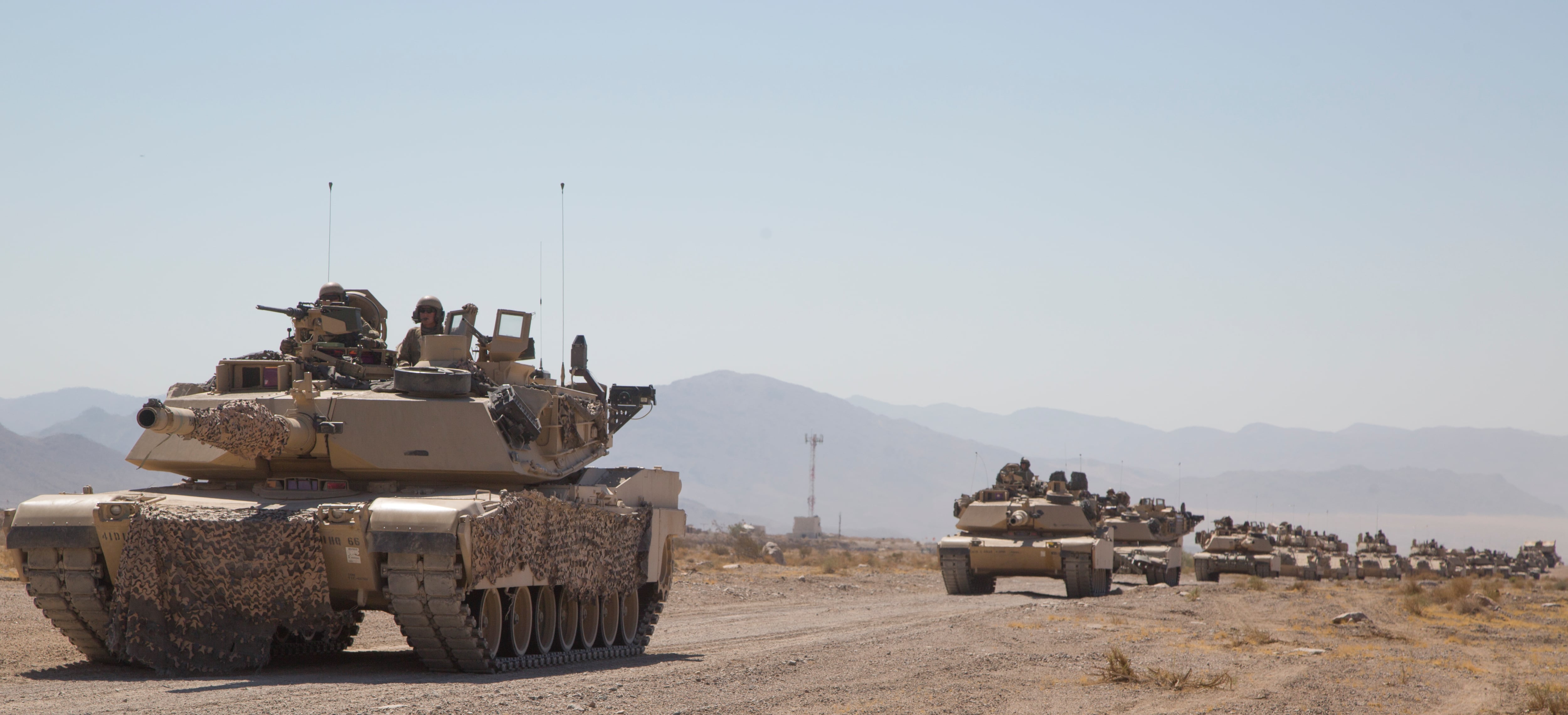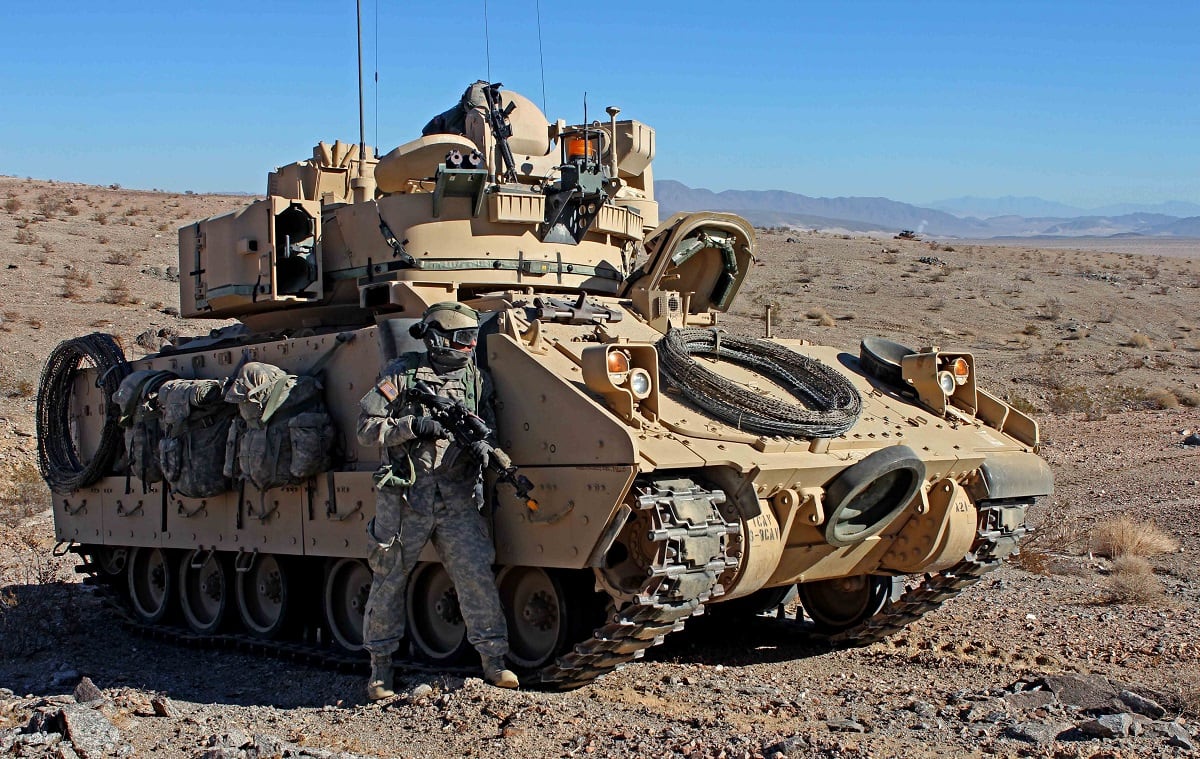As Army leadership looks to transform ground operations and logistics experts shave supply requirements such as fuel, work being done to generate more electric power with less fuel is at the heart of the land fight in the next wave of warfare.
The two paths converge at work being done to “electrify” the future vehicle fleet at the Army’s center for vehicle research – the Tank Automotive Research Development and Engineering Center. A November forum at TARDEC focused on advances in vehicle electrical power as service leaders, industry experts and researchers pursue ways to give more soldiers more power to run complex systems of the future.
The first such forum took place in June and laid out an overview of what will need to happen to reach Army goals. Over the next year, participants will refine their plans to build a complex fleet of vehicles capable of a host of tasks not yet fielded.
Vehicles have come a long way from moving forward and backward and carrying troops and ammo.
“The electrical demands on the Army’s vehicles today are growing far beyond anything we’ve seen before,” said George Hamilton, TARDEC’s lead for Vehicle Electronics Architecture. “Our focus is on developing and providing a modular, flexible and adaptable vehicle architecture that can expand to meet future demands of all kinds.”
And the goals are ambitious. The Army wants most of the electrification infrastructure in place or ready for testing by mid-2024 and a working, all-electric power train for the fleet by 2027.
The systems and capabilities that the electrification project is pursuing are aimed at enabling seamless Multi-Domain Operations in which forces can access limited windows in the fight at various domains, from the traditional air-land-sea to cyber-electronic warfare-space domains.
But, power demands on legacy vehicles only grow as more systems are added, experts said.
Over time, that’s meant entirely new wiring, amplifiers and other electronics architecture for the same vehicles that have been in service for decades. For example, in 2001, the standard vehicle only required a 150 amp alternator to power its onboard systems.
Today, that same vehicle needs 10 times the amperage to run all of the weapon systems, computers, radios, monitors and cameras on current vehicles.
RELATED

At a recent talk at the Association of the U.S. Army, Lt. Gen. Aundre Piggee, the Army G-4, said that future combat operations will not be able to rely on forward operating bases. Logisticians will need to find expeditionary ways to move supplies, especially fuel, to combat units.
Current brigade combat teams are able to operate for about three days before a full resupply. But Piggee said that the goal is to stretch that to seven days.
To meet that end, a variety of options are being explored, but the main supply saver is reducing demand, specifically fuel.
BCTs will need to use at least one-third less fuel to keep their standalone abilities at the one-week mark, he said.
That extends beyond petroleum and to battery life, power consumption on smart grids, and anywhere else that technology procedures and advancements can make the formation lethal as long with less fuel or power consumption.
So, at the same time that larger formations must be more self-sustaining and use less fuel, the systems that enable their fighting might will need more power.
Tomorrow’s vehicles will need to do much more than what’s being demanded now.
On the Army wish list are energy weapon systems to counter rockets, missiles and drones, wireless energy beaming to help with running unmanned ground vehicles and aerial drones with remote power, non-lethal energy weapons for crowd disbursement, silent modes for vehicle movement, high-power electronic jamming, electronic armor to deflect electromagnetic spectrum and projectile attacks, and long-range electromagnetic guns for multiple uses.
And the backbone of those capabilities is an open architecture powering system on the next wave of ground vehicles that nearly any system built today or decades from now can plug into, and it will provide the power needed to run.
Part of that, the Next-Generation Combat Vehicle Electrical Power Architecture, has been in development at TARDEC since 2012.
Once implemented, the system is expected to provide fuel efficiency that will reduce fuel consumption by more than 10 percent and provide 20 percent more efficient power generation and energy transfer. That will put less strain on the vehicle systems while using less fuel and providing more power.
And, it can take powerful hybrid vehicles, those using both petroleum-based fuels and battery or fuel cell power.
This effort is coupled with a recent partnership between TARDEC and the U.S. Department of Energy into hydrogen fuel cell technology.
“We think hydrogen as a fuel source, and the fuel cells that generate electricity from the hydrogen, will enable enormous capability for our warfighters,” Paul Rogers, director of TARDEC, said in a release.
The applications go beyond fuel efficiency and reducing fuel logistics burdens.
“Vehicles using hydrogen run on electric motor propulsion, giving very low noise and thermal signatures while in operation,” Rogers said. “Additionally, we can generate valuable electrical power using hydrogen fuel cells that currently requires noisy and heavy generators.”
Both of those efforts could help not only operational forces in the tactical fight but the surrounding support that brings them their supplies.
Todd South has written about crime, courts, government and the military for multiple publications since 2004 and was named a 2014 Pulitzer finalist for a co-written project on witness intimidation. Todd is a Marine veteran of the Iraq War.




